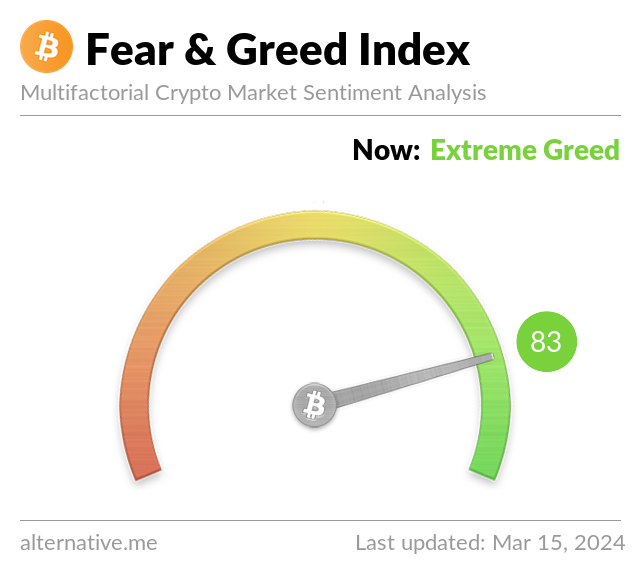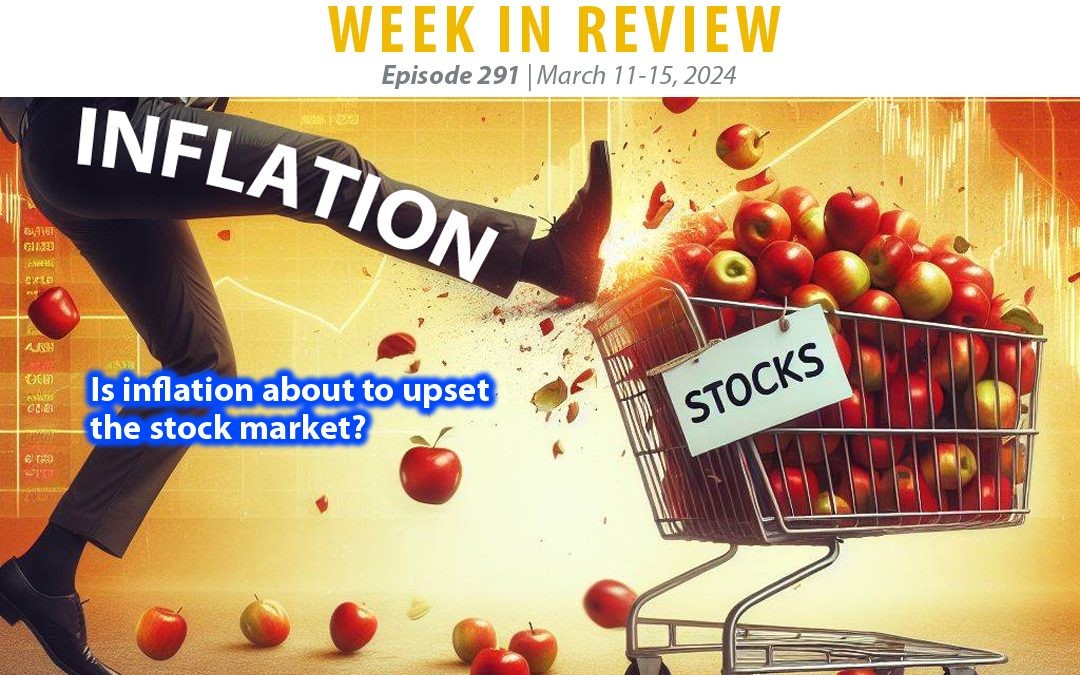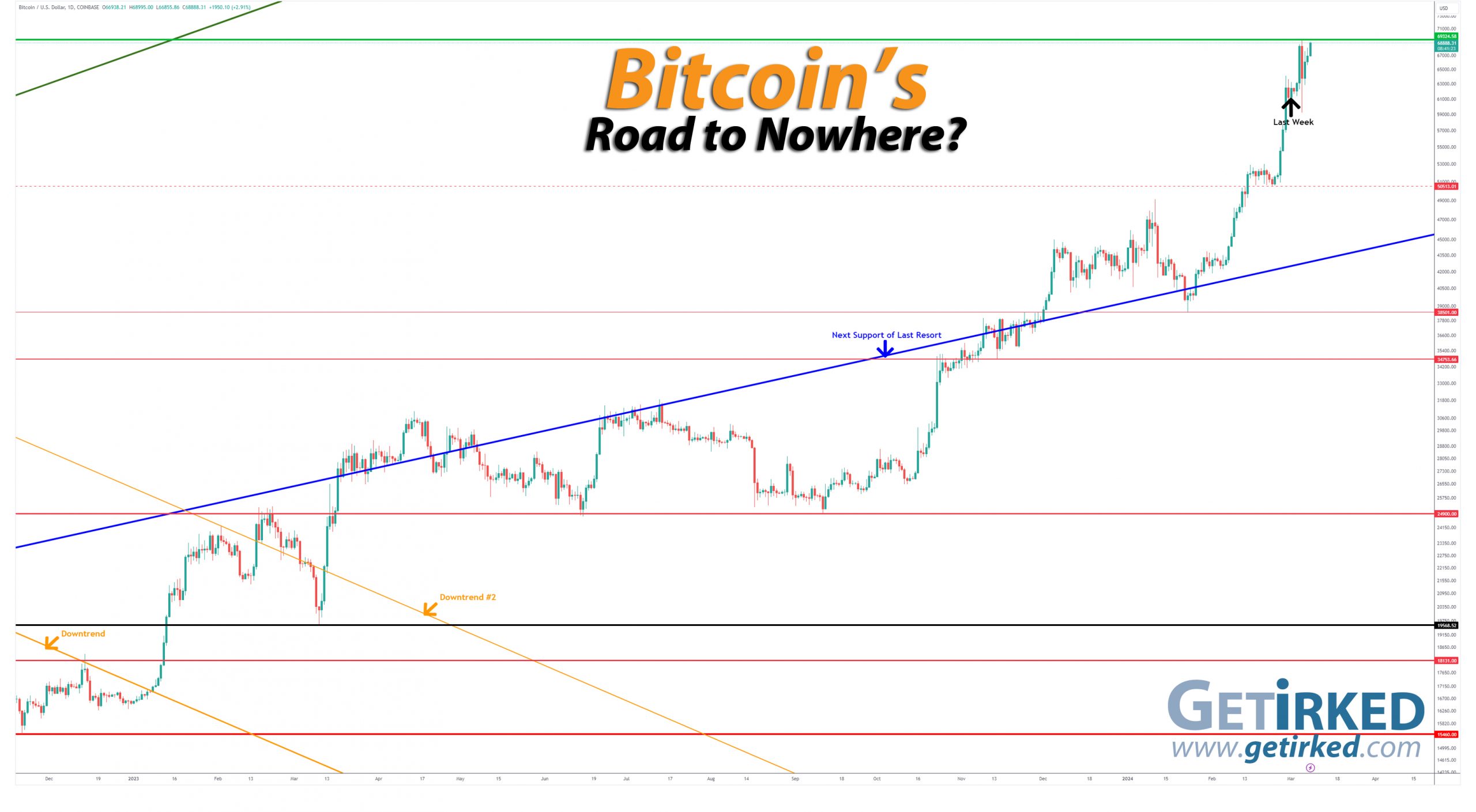Summing Up The Week
Reports showing inflation might be coming back to life were enough to upset the apple cart for the stock market this week. Initially, it appeared as though stocks shrugged off the CPI report which came out on Tuesday, rallying more than 1%, but when PPI came in reiterating the inflation problem on Thursday, stocks gave it up.
Let’s take a look at the news that moved the markets this week…
Market News
Long-term inflation expectations rise
On Monday, the consumer inflation expectations survey showed that Americans expect inflation to increase over the long-term, reported CNBC. The New York Federal Reserve’s survey showed that the outlook for the next year remained unchanged at 3%, but over the next three years, consumers expectations rose 0.3% to 2.7% and 0.4% over five years to 2.9%.
While it may sound ridiculous to use the average American’s outlook as a gauge for inflation, this actually isn’t the case. Studies show that if consumers expect inflation, they will spend more now, causing prices to rise, and creating the very inflation they fear. The same works in reverse with deflation – if consumers expect prices to be cheaper in the future, they stop buying now, causing prices to drop and creating the deflation.
Accordingly, this report was not good news for the Fed as their target for inflation is 2%, much lower than the expectations of the consumers surveyed.
February CPI comes in as-expected
On Tuesday, the Consumer Price Index (CPI) showed prices increased 0.4% in February and 3.2% from last year, both in-line with expectations, reported CNBC. However, that does represent an increase in inflation from January to February, not what the Federal Reserve would like to see.
“Inflation continues to churn above 3%, and once again shelter costs were the main villain. With home prices expected to rise this year and rents falling only slowly, the long-awaited fall in shelter prices isn’t coming to the rescue any time soon,” said Robert Frick, corporate economist at Navy Federal Credit Union. “Reports like January’s and February’s aren’t going to prompt the Fed to lower rates quickly.”
However, strangely enough, the markets took the in-line result as good news, baffling many notable Bearish pundits who believed an increase in CPI would be a catalyst to cause the stock market to sell off. Conversely, stocks rallied on Tuesday. Substantially. Both the S&P 500 and the Nasdaq finished up more than +1% and nearly 1.5%, respectively.
Wholesale inflation rose 0.6% in February, more than expected
On Thursday, the Producer Price Index (PPI) showed a jump of 0.6% in wholesale prices in February, double the 0.3% forecast from Dow Jones economists, reported CNBC. Where the CPI measures the prices consumers pay, the PPI measures the prices producers pay, and, therefore, tends to be a leading indicator of where inflation is headed. In other words, inflation may be heading higher, not lower, from here.
This is certainly not good news for any market participants who were hoping for a cut in interest rates anytime soon. In fact, the chances for a cut in June, which had been at 80% earlier in the year, have now dropped to lower than 50%.
As a result of this second hot inflation report, the market, which had recovered from earlier in the week, rolled over and sold off.
Next Week’s Gameplan
Market stability seems to be holding up for the moment. The big news next week is the Federal Reserve’s interest-rate decision which will take place on Wednesday. The market consensus is that the Fed will not be cutting rates next week, rather keeping them where they are.
Even in spite of the reports showing rising inflation this week, I am in alignment with the consensus that the Fed will keep rates steady. Some of the more Bearish pundits I’ve heard believe there’s actually a chance Powell will raise interest rates another 0.25% next week. While I believe the chances of that happening are incredibly slim, such a decision would almost certainly cause a severe pullback in markets.
Outside of the Fed, there are a variety of smaller potential catalysts as well, but I’ll be focusing the majority of my attention on Wednesday at 2:00 p.m. ET when the Fed decision is released.
As always, I’ll see you back here next Friday, friends!
This Week in Play
Stay tuned for this week’s episodes of my two portfolios Investments in Play and Speculation in Play coming online later this weekend!
Crytpo Corner

Bitcoin Price (in USD)
%
Weekly Change
Bitcoin Price Action
Bitcoin’s Highs Get Higher!
Bitcoin is solidly in a bull market, making new all-time highs after consolidating for a few days (sometimes only a few hours), while also finding support at higher lows. While it’s worth remembering that Bitcoin has been known to pull back -35% (and more!) even during a bull market, the amount of strength and fervor of Bullish buying validates the Bull Market argument.
Currently, Bitcoin’s all-time high is $73,835.57. On Thursday, Bitcoin’s pullback broke or previous weekly low of support at $67,112.21 creating new support at $65,565.70. After that, we’re looking at monthly support down at $59,224.68.
The Bullish Case
Bulls continue to rule the momentum with every dip being bought up quickly and with significant volume. Bulls point to both the ETFs and renewed interest in Bitcoin thanks to inflation as potential catalysts for the higher-highs. The Bulls I trust believe that Bitcoin should be able to reach $75K-$76K within the coming few weeks and months.
The Bearish Case
Bears like renowned goldbug Peter Schiff are screaming from the rooftops that Bitcoin will sell off 50% or more, only to have the world’s biggest cryptocurrency defy them and rocket to new all-time highs. There will likely be a pullback of some size in Bitcoin sometime soon, but the Bears have been so wrong for so long that there isn’t a single one in the space who I find credible, for the moment.
*Bitcoin Trade Reset*
Locked in +7.34% gain in 6 days, +446.52% annualized.
I was able to make three buys over the weekend before Bitcoin shot to new all-time highs early in the week. The buys gave me an average buy price of $68,577.70 (after fees) and lowered my per-coin cost -0.11% from $69,990.01 to $69,916.79. They also increased my allocation +5.36% from 1.867% to 1.967%.
Of course, when Bitcoin rocketed above my cost basis, it started triggering sell orders. I made a total of 14 sales, giving me an average selling price of $71,876.84 (after fees). The sales reduced my allocation -22.06% from 1.967% to 1.533%.
When Bitcoin had a brief selloff on Tuesday that was immediately bought up, I decided that my allocation was small enough that I could reset the trade, locking +7.34% in gains over six days which works out to +446.52% annualized.
Whenever Bitcoin is in a bull rally and I start to feel that I don’t have enough allocated, instead of adding more to the position, I simply reset the trade by raising my cost basis and removing the difference in Bitcoin from the exchange.
Over the years, I’ve discovered that I absolutely hate raising my cost basis. This is entirely psychological, but I’ve found that by raising my cost basis, I’m able to add to my allocation more easily since it lowers my new cost basis rather than raising it.
Additionally, whenever I reset the trade, I don’t sell the difference in Bitcoin (or whatever crypto I may be trading), I pocket the profits in the coin I was trading. This way, I increase my stack and increase my future exposure.
Bitcoin Trade Update
Current Allocation: 2.000% (+30.46% since Start of Trade)
Current Per-Coin Price: $72,213.98 (-1.06% since Start of Trade)
Current Profit/Loss Status: -5.23% (*New Trade*)
On Tuesday, I reset my trade, giving myself a new cost basis at $72,989.46 (just under Bitcoin’s high according to the Gemini platform). With an allocation of just 1.533%, this permits me to start back to the position at much higher prices. I’m hoping for a substantial pullback, but I’m not counting on it so I must continue to add to my position at past points of support all the way down.
I was able to make 8 buys when Bitcoin pulled back from its all-time high. The buys left me with an average buying price of $69,778.11 (after fees) and lowered my per-coin cost down -1.06% from $72,989.46 to $72,213.98. The buys also raised my allocation +30.46% from 1.533% to 2.000%.
Bitcoin Buying Targets
Using Moving Averages and supporting trend-lines as guides, here is my plan for my next ten (10) buying quantities and prices:
0.055% @ $65,702
0.055% @ $64,307
0.055% @ $63,407
0.055% @ $62,758
0.055% @ $61,887
0.055% @ $61,259
0.055% @ $60,426
0.055% @ $59,857
0.055% @ $58,507
0.172% @ $57,134
Not Your Keys, Not Your Crypto…
In light of brokerage failures in 2022, I no longer keep any of my crypto on an exchange and I only keep enough USD on the exchanges I use to execute my next few buys. I use multiple cold wallets from the brands Ledger and Trezor to hold my crypto (click the links to access the direct sites, and I receive no affiliate benefits from these links).
Additionally, I have now divided my allocated USD between two different exchanges – Gemini and Coinbase – in case one (or both) becomes insolvent. Disclaimer: We both receive a bonus if you use my Gemini referral link to open an account.
I do not trust anyone in the space, even with Coinbase (COIN) being publicly traded (and one of my own Investments in Play positions).
No price target is unrealistic in the cryptocurrency space – Bullish or Bearish.
While traditional stock market investors and traders may think the price targets in the cryptocurrency space are outlandish due to the incredible spread (possible moves include drops of -90% or more and gains of +1000% or more), Bitcoin has demonstrated that, more than any speculative asset, its price is capable of doing anything.
Here are some of Bitcoin’s price movements over the past couple of years:
- In 2017, Bitcoin rose +2,707% from its January low of $734.64 to make an all-time high of $19,891.99 in December.
- Then, Bitcoin crashed nearly -85% from its high to a December 2018 low of $3128.89.
- In the first half of 2019, Bitcoin rallied +343% to $13,868.44.
- In December, Bitcoin crashed -54% to a low of $6430.00 in December 2019.
- In February 2020, Bitcoin rallied +64% to $10,522.51.
- In March , Bitcoin crashed nearly -63% to a low of $3858.00, mostly in 24 hours.
- Then, Bitcoin rallied +988% to a new all-time high of $41,986.37 in January 2021.
- Later in January 2021, Bitcoin dropped -32% to a low of $28,732.00.
- In February, Bitcoin rallied +103% to a new all-time high of $58,367.00.
- Later in February, Bitcoin dropped -26% to a low of $43,016.00.
- In April , Bitcoin rallied +51% to a new all-time high of $64,896.75.
- In June , Bitcoin crashed -56% to a low of $28,800.00.
- In November, Bitcoin rallied +140% to a new all-time high of $69,000.00.
- In November 2022, Bitcoin crashed -78% to a low of $15,460.00.
- In April 2023, Bitcoin rallied +101% to a high of $31,050.00.
- In June, Bitcoin dropped -20% to a low of $24,750.00
- In July, Bitcoin rallied +29% to a high of $31,862.21.
- In September, Bitcoin dropped -22% to a low of $24,900.00.
- In January 2024, Bitcoin rallied +97% to a high of $49,102.29.
- Later in January, Bitcoin dropped -22% to a low of $38,501.00.
- In March, Bitcoin rallied +92% to a new all-time high of $73,835.57.
Where will Bitcoin go from here? Truly, anything is possible…
What if Bitcoin’s headed to zero?
The only reason I speculate in the cryptocurrency space is I truly believe Bitcoin isn’t headed to zero. I am prepared for that possibility, however, by knowing I could potentially lose all of the capital I’ve allocated to this speculative investment. Professional advisers recommend speculating with no more than 5% of an investor’s overall assets. Personally, I’ve allocated less than that to speculating in crypto. I feel that anyone who doesn’t fully believe in the long-term viability of cryptocurrency would be better served not speculating in the space. On a good day, this asset class isn’t suitable for those with weak stomachs. On volatile days, the sector can induce nausea in the most iron-willed speculator. If a speculator isn’t confident in the space, the moves will cause mistakes to be made.DISCLAIMER: Anyone considering speculating in the crypto sector should only do so with funds they are prepared to lose completely. All interested individuals should consult a professional financial adviser to see if speculation is right for them. No Get Irked contributor is a financial professional of any kind.


